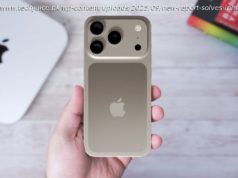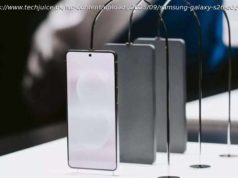Dell completely revamped the XPS 13 for 2018, and now Apple has brought 8th-gen Intel processors to some of its MacBook Pro lineup, along with an updated keyboard. But is the CPU bump enough to give the MacBook the advantage over the king of thin and light laptops?
The Dell XPS 13 has been a fantastic laptop since it’s relaunch in 2015, but every design gets old after a few years. In 2018, Dell unveiled a complete revamp of the laptop with an emphasis on design finesse, which just happens to be what attracts a lot of people to the MacBook Pro.
But when you compare the two, does the Dell do enough to win over Apple fans?
Design will always have a subjective aspect to it, but these laptops are both at the top of their respective games. In particular, the design of the MacBook Pro has become iconic. It’s been iterated upon over the years, but the silver, aluminum, unibody look has remained largely the same — and it’s not anything people complain about.
One of the great things about the Dell XPS 13 is that it never attempted to clone anything the MacBook Pro did. It has its own sense of style, and it’s only gotten better in 2018. The new XPS 13’s ultra-thin bezels have become even smaller this time around, resulting in a laptop with a tiny footprint on the table. The MacBook Pro isn’t bad in this regard, but the XPS is definitely a trimmer machine. What really sets it apart are the option of a white and rose gold color scheme, or the black carbon-fiber texture in the palm rests.
Apple’s improvements to the keyboard and input methods on the MacBook Pro are a mixed bag. We were a big fan of the old keyboard, but weren’t so hot on the Butterfly key switches found in the new MacBook, which have now made their way to the MacBook Pro.
The XPS 13’s keyboard and touchpad are comfortable and run-of-the-mill, where the MacBook Pro’s new Touch Bar has the possibility of setting it apart from the pack or frustrating users. The latter component is an OLED multitouch display that’s meant to replace the MacBook’s top row of function keys — it also adapts based on whatever software you’re using. The technology sounded promising at first, but it turned out to be completely forgettable — and even inconvenient at times.
As expected, the new MacBook Pro features four Thunderbolt 3 (USB-C) ports and a single 3.5-millimeter headphone jack, or two Thunderbolt 3 ports if you opt for the non-Touch Bar version. While USB-C support continues to grow, a lot of users may still be put off by the lack of standard ports. The XPS 13 is similar, offering two Thunderbolt 3 ports — however, it includes a microSD slot and packages in a USB dongle.
Dell has struck a good middle ground with its new XPS 13, and we think it struck a nice balance of high-powered, futureproof ports and accessibility with older accessories.
Winner: Dell XPS 13
Both laptops feature options for both Core i5 and Core i7 CPUs, but the MacBook Pro’s is still behind a generation. The new XPS 13 uses the 8th-gen Core processors, which is a component we tested in the 2017 XPS 13 and saw some pretty impressive results with.
The advantage is a slimmer in terms of RAM. For the Apple, 8GB of RAM is the standard, but the system also starts $300 higher. The $1,000 XPS 13 includes a Core i5,4GB of RAM, and 128GB of storage. Both systems have SSD options ranging from 128GB to 1TB, though neither of them have discrete graphics cards.
Don’t expect to play games on either of these laptops — but if you want more power in a smaller package, the XPS 13 is where you should look.
Winner: Dell XPS 13
With the introduction of a 4K model, we had hoped that Dell would have taken its display to the next level. Even though it claims a 1,500:1 contrast ratio and 400 nit brightness, it falls short of the 1080p’s nearly perfect color accuracy, which shows 100 percent of the colors in the Adobe RGB scale. In addition, the 4K model results in drop in a noticeable drop in battery life, making the 1080p the better option.
The MacBook Pro’s display isn’t 4K, but it’s sharper than 1080p. It also scores better marks than either XPS 13 display in color accuracy and color gamut. The Dell’s display options are great, but the MacBook Pro edges them out here.
Winner: MacBook Pro
The MacBook Pro used to be the thinnest and lightest laptop in town, but those days are long gone. The new XPS 13 is both lighter and thinner, making it super easy to throw it in your bag or hold it in your hand. As for battery life, that’s another area Apple has fallen behind in.
The battery in the older MacBook Pro was 74.5 watt-hours, while the 2016 model without a Touch Bar is just 54.5, and the Touch Bar version is just 49.2. Even with the improvements to energy efficiency in MacOS High Sierra, that’s not a great sign for the Pro’s battery life. The MacBook Pro lost some of it’s battery life pedigree.
The 2018 Dell XPS 13 actually pulls a trick similar to the newest MacBook Pro 13, reducing battery size from 60 watt-hours to 52 watt-hours. That’s a smaller step back, and the newer Intel 8th-gen Core processor is more efficient, so it may be a wash in real-world use. In our testing, we saw around 13 and a half hours of battery life in our video loop test, which has an advantage over the MacBook Pro.
Winner: Dell XPS 13
The Dell XPS 13 starts at $800 for the older model with a Core i3 model. It’s quite a good laptop at that price, and we do recommend it. However, you’ll have to spend $1,000 for the new XPS 13, and the one you want is the $1,199 version, which has a Core i5 processor, 8GB of RAM, and a 256GB solid state drive.
Apple’s MacBook Pro 13 starts at $1,299. That’s for a model with a Core i5 processor, 8GB of RAM, and 128GB of storage. The base model also has just two Thunderbolt 3 ports and lacks the Touch Bar. Most people will at least need the $1,499 model, which has 256GB of RAM, and you’ll want the $1,799 model, which add two more Thunderbolt 3 ports and the Touch Bar.
As you can see, the MacBook Pro 13 is more expensive to start, and its price goes up rapidly. Dell’s XPS 13 is clearly a better value.
Winner: Dell XPS 13
The redesigned Dell XPS 13 steals the crown from the MacBook Pro 13 in most areas. Not only does it beat it out or compete closely in nearly every area, it does it with a sense of confidence in its aesthetics that’s a bit rarer from Windows laptops.






